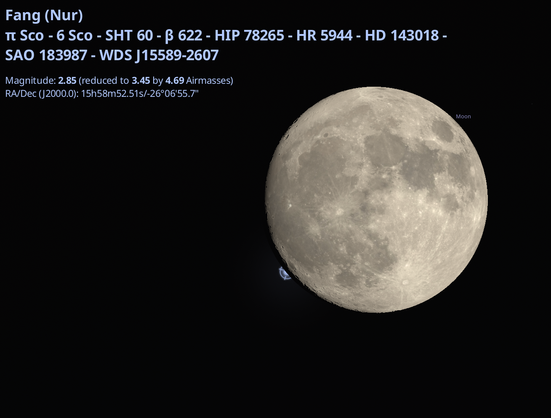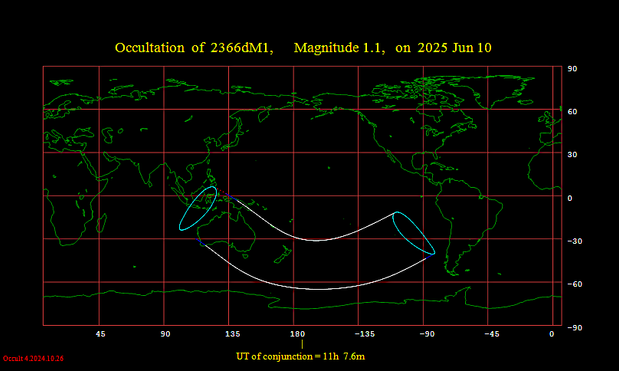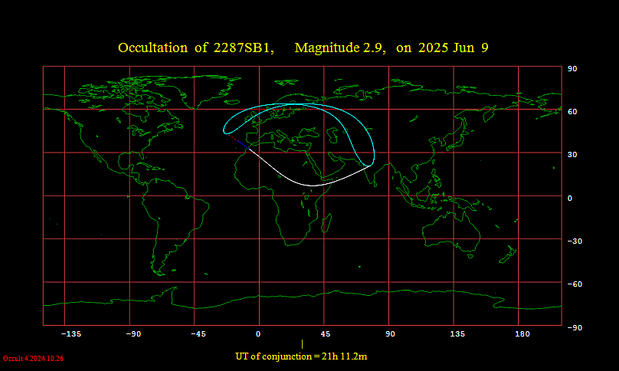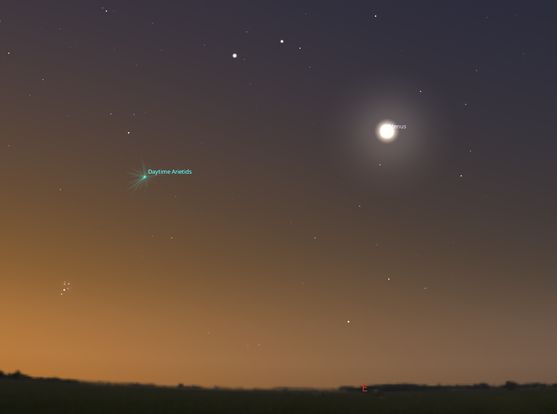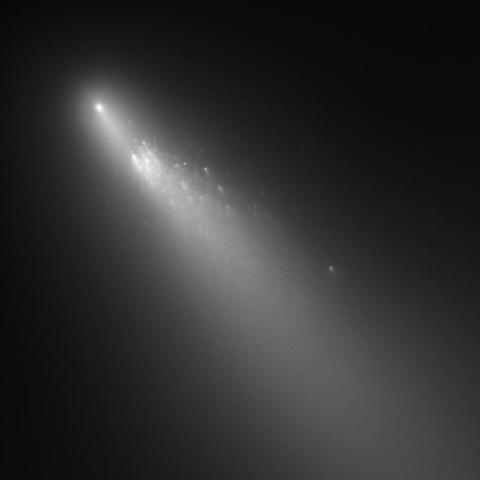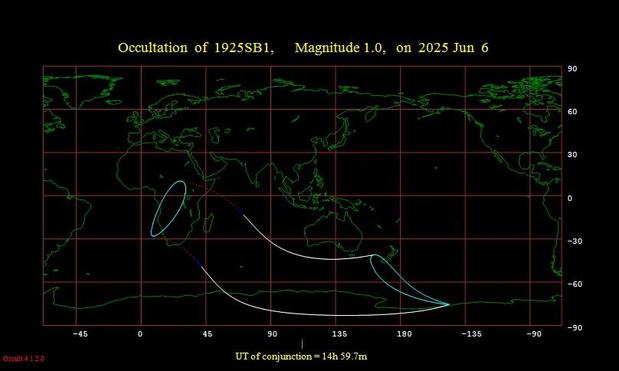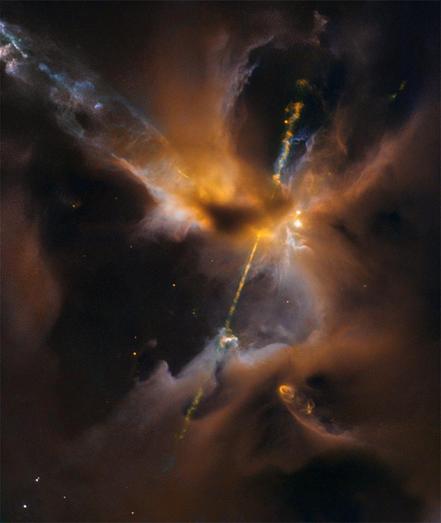SpaceX’s launch of a Falcon 9 rocket from LC-39A at the Kennedy Space Center with Crew Dragon and the Axiom-4 mission headed to the International Space Station slipped one more day ‘til tomorrow morning at 7:37 AM EDT/11:37UT; hey, a slip of a few more days would make for a photogenic dawn launch headed up the U.S. Eastern Seaboard. Watch the launch webcast live: https://www.youtube.com/live/T3sue4w2Ukw?si=zuRlRrKxK2p7Q-r8
Writer, skywatcher, long-time amateur astronomer, bird-site refugee. Continuing my mission to get eyes on the sky worldwide. 🇺🇸🇺🇦🌻🖤❤
"The danger is not that AI will fail us, but that people will accept the mediocrity of its outputs as the norm..." - Is AI sparking a cognitive revolution that will lead to mediocrity and conformity? - Via @ConversationUS - https://theconversation.com/is-ai-sparking-a-cognitive-revolution-that-will-lead-to-mediocrity-and-conformity-256940
Remember the northernmost Full Moon of late 2024 last December? Now it’s the southern hemisphere’s turn, with the southernmost Full Moon of 2025, coming right up tonight. In fact, this is actually the southernmost Full Moon of a generation, spanning from 2006 to 2044. Read on to see why in our post for @universetoday - https://www.universetoday.com/articles/junes-full-moon-is-the-southernmost-for-a-generation
Traveling to Mars and Ceres Using Lunar Gateway as a Springboard - Via @universetoday - https://www.universetoday.com/articles/traveling-to-mars-and-ceres-using-lunar-gateway-as-a-springboard - too bad that Gateway won't happen now...
One busy Moon: over the next 24 hours, the waxing gibbous Moon occults (passes in front) of:
-The +2.9 magnitude star Pi Scorpii for Europe, northern Africa and the Middle East at 21:11UT;
-And the +1.1 magnitude star Alpha Scorpii (Antares) for Australia and New Zealand at 11:07 UT.
The IOTA has ingress/egress times for select locations in the path: http://www.lunar-occultations.com/iota/bstar/bstar.htm
Ancient poop yields world’s oldest butterfly fossils - Via Science.Org - https://www.science.org/content/article/ancient-poop-yields-world-s-oldest-butterfly-fossils - and there may be older finds out there...
An elusive one: the Arietid meteors peak today. These hail from the constellation Aries, the Ram. Trouble is, they also approach the Earth from the near-sunward direction in early June; the most you can expect to see is a brief few before dawn. The stream remains active most of the month, and the source is either comet 96P/Machholz or an as yet-to-be identified Kreutz family sungrazer.
The shower was only discovered in 1947, when Jodrell Bank astronomers picked up the shower via radio. You can hear the ‘pings’ of meteors on the FM dial, and see the uptick in activity on the Canadian Meteor Orbit Radar site: https://fireballs.ndc.nasa.gov/cmor-radiants/
@AstroDave I used to have a lot of fun annotating apods...
Rainbow Airglow over the Azores
Image Credit & Copyright: Miguel Claro (TWAN); Rollover Annotation: Judy Schmidt @spacegeck - https://apod.nasa.gov/apod/ap250603.html - Great example of airglow.
Holy crap. Viewing the updated block schedule for the upcoming #AAS246 meeting, and so many town halls, where we get updates from NASA and NSF admins, plus updates on specific missions and observatories, have been outright cancelled. Likely means tons of things are going away, with no information.
Interesting. Researchers from the Global Meteor Network report brief outbursts from the tau Herculid meteor shower on May 30 and June 3rd, earlier this week. If the name sounds familiar, it’s because the shower made the news for an expected outburst a few years back, in 2022. http://www.cbat.eps.harvard.edu/iau/cbet/005500/CBET005561.txt
The shower is the result of periodic comet 73P/Schwassmann-Wachmann. Hubble caught the comet in the act of fragmentation in 2006. Clearly, its worth keeping an eye out for the tau Herculids in late May/early June. https://science.nasa.gov/image-detail/comet-73p/
New model helps to figure out which distant planets may host life - Via @ConversationUS - A new method to think about the search for life in the Universe: https://theconversation.com/new-model-helps-to-figure-out-which-distant-planets-may-host-life-256427
Space is hard… and the lunar surface is even harder. Japan-based iSpace attempted a second landing on the Moon yesterday, with its Hakuto-R Mission 2 lander Resilience. All was nominal... until the lander fell silent, just 90 seconds prior to touchdown. Here’s our post for Sky & Telescope with updates and what might be next for the company: https://skyandtelescope.org/astronomy-news/japaneses-resilience-lander-crashes-on-the-moon/
Afterimage Sunset - Image Credit: Marcella Giulia Pace - Astronomy Picture of the Day: https://apod.nasa.gov/apod/ap250531.html -Tried it; the after image thing really works.
Tonite: the 81% illuminated, waxing gibbous Moon occults (passes in front of) the +1st magnitude star Spica (Alpha Virginis) for southern New Zealand, Tasmania and the southern Indian Ocean at ~15:00 Universal Time (UT). This is part of a cycle of occultations of the star by the Moon, running out until November 17th, 2025. Waxing occultations are always fun to watch, as the nighttime dark limb of the Moon leads the way.
There’s also another reason to watch the Moon tonight, as iSpace’s Resilience lander will land in the Mare Frigoris (Sea of Cold) this afternoon, just past local sunrise at the landing site. Watch live: https://www.youtube.com/live/BVSMXQPeTcw?si=Toy7JXH8XwJvG0FU
May see first light by 2030 - China is quietly preparing to build a gigantic telescope - Via Science.Org - https://www.science.org/content/article/china-quietly-preparing-build-gigantic-telescope
China’s Epoch Space put on a show last week, with a successful water test soft-landing of their Yanxinghe-1 booster. This comes as the Beijing-based company plans to carry out its first orbital launch later this year. Here’s our latest post on the test, the company, and the rise of China’s space startups for @universetoday - https://www.universetoday.com/articles/resusable-chinese-rocket-soft-lands-in-the-ocean-in-a-new-test
Not a double-bladed lightsaber: https://apod.nasa.gov/apod/ap250528.html
Smoke from ongoing wildfires in western Canada continue to spread haze over North America, as far south as the Gulf of Mexico and east to Europe today; you can see it getting pushed southward in today’s view from NOAA’s GOES East satellite: https://www.star.nesdis.noaa.gov/GOES/fulldisk_band.php?sat=G16&band=GEOCOLOR&length=12
CAMS Copernicus also sees the aerosol path from the fires along both side of the Atlantic: https://atmosphere.copernicus.eu/cams-tracks-smoke-intense-canadian-wildfires-reaching-europe
Expect some murky red sunrises/sunsets in the days to come.
Passing Earth coming right up this week on June 5th:
https://www.virtualtelescope.eu/2025/05/26/potentially-hazardous-asteroid-424482-2008-dg5-close-encounter-a-new-image-25-may-2025/
